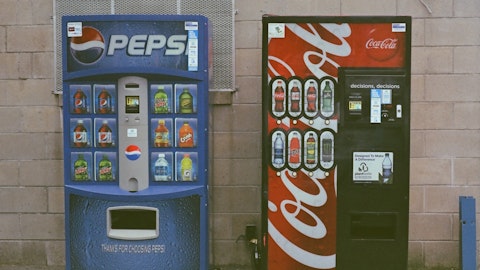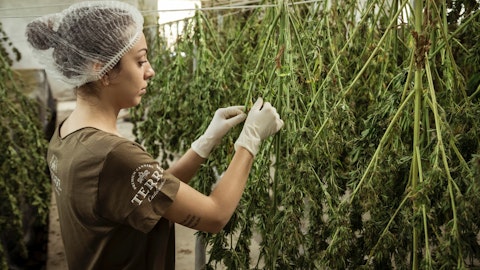4. Dollar Tree, Inc. (NASDAQ:DLTR)
Number of Hedge Fund Holders: 40
Dollar Tree, Inc. (NASDAQ:DLTR) is a leading discount store retailer in the United States. The company operates through two segments: Dollar Tree and Family Dollar. As of July 2022, Dollar Tree, Inc. (NASDAQ:DLTR) operates more than 15,500 stores that are spread across 48 states in the U.S. and five Canadian provinces. On June 29, Truist analyst Scot Ciccarelli reiterated a Buy rating and his $178 price target on Dollar Tree, Inc. (NASDAQ:DLTR).
Dollar Tree, Inc. (NASDAQ:DLTR) is another discount store retailer that Jim Cramer thinks can weather a moderate recession. Moreover, UBS analysts also named the stock among their top conviction picks for a recession. UBS analysts have an Overweight rating and $185 price target on Dollar Tree, Inc. (NASDAQ:DLTR).
Hedge funds are raising their stakes in Dollar Tree, Inc. (NASDAQ:DLTR). At the end of Q1 2022, 40 hedge funds held stakes in Dollar Tree, Inc. (NASDAQ:DLTR). The total value of these stakes came in at $3.56 billion, up from $1.76 billion in the previous quarter with 44 positions.
In the first quarter of 2022, Mantle Ridge LP raised its stakes in Dollar Tree, Inc. (NASDAQ:DLTR) and brought them to $1.82 billion. As of March 31, the fund owns over 11.36 million shares of the company and is the largest shareholder.
Here is what Broyhill Asset Management had to say about Dollar Tree, Inc. (NASDAQ:DLTR) in its fourth-quarter 2021 investor letter:
“Our short-term trade in Avis was unusual for our long-term investment approach, but occasionally the market figures out mispricing sooner than later, and when it does, we are more than happy to take our chips off the table and wait for the next opportunity.
Our investment in Dollar Tree, which we’ve held for nearly five years, is more representative of our typical time horizon and investment philosophy, which seeks mispriced assets with minimal downside and the potential to double our capital over 3-5 years. Those doubles rarely play out as quickly as the surge in rental car pricing. Just last quarter, we highlighted Dollar Tree as a top detractor
after the company issued weak guidance due to rising cost pressure. Investors were rightly frustrated after years of management missteps and false starts following the acquisition of Family Dollar.At some point, we hoped, sentiment would be just right. While the timing of that scenario is impossible to predict, we increased our position in September as shares traded back towards our original 2017 purchase price. At month end, the board increased Dollar Tree’s existing share repurchase authorization to $2.5 billion, representing~ 13% of the company’s then market capitalization, initiating a dramatic shift in investor sentiment. Management also announced that it was on track to have 500 Dollar Tree Plus stores by fiscal year-end, with another 1,500 stores planned for FY22 and at least 5,000 expected by FY24. In addition, management highlighted the success of the company’s Combo Stores (which include both Dollar Tree and Family Dollar banners), noting sales and gross profit increases greater than 20% and 30%, respectively. While there are only 105 existing Combo Stores, management expects to add 400 more in FY22, with the potential for up to 3,000 over the next several years.
In our experience, big gains often come after years of meager performance. Patience truly is a virtue in this business, as successful investing requires confidence in your research and analysis, even when the market disagrees with you for what may seem like an eternity. In this case, after holding Dollar Tree for half a decade, shares nearly doubled, gaining 77% in the two months following that management announcement. Despite recent gains, we continue to hold our investment as consensus estimates have yet to catch up to the likely inflection in earnings power from higher price points. And with the guidance of Richard Dreiling, the former Dollar General CEO, credited with turning around DG in the early part of the last decade, we think the odds of successful execution have increased materially.”





